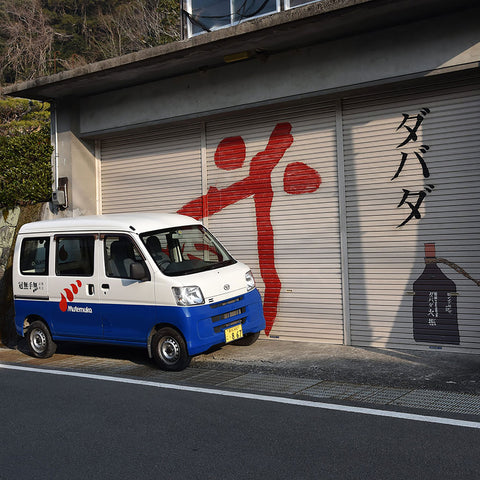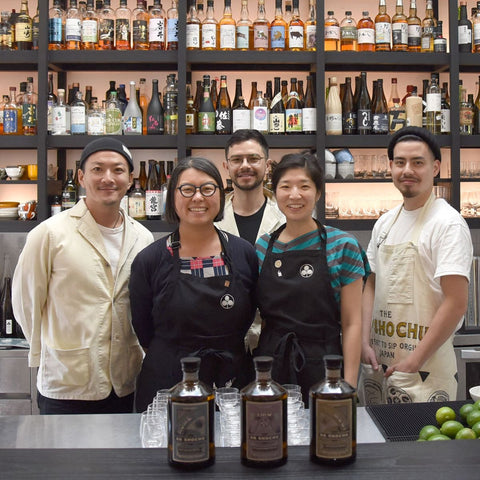
Hamakawa Shoten was the last brewery we went to in Kochi. By that time, we had been in Kochi for four days and we were eating, living, and breathing Kochi. Thankfully, we were over our intense hangover that we were slogging through the day before at Kameizumi and Suigei.
Hamakawa Shoten has been brewing sakes since 1904 and is the eastern-most brewery in Kochi. They produce about 150,000 1.8L bottles per year and make sake, liqueurs, and shochu.
Their sake brand Bijofu means "gentleman" in Japanese and evokes historical Kochi figures like Nakaoka Shintaro and Sakamoto Ryoma. Both were samurais who overthrew the Tokugawa Shogunate. The brewery prides themselves on making refreshing sakes with dry finishes.
Kitaoka-san of the Hamakawa Shoten picked us up in Kochi City at 9am on a Sunday morning. It took about one hour to get to Tano, where the brewery is located. We drove along the coast of the Pacific Ocean. I gazed out the window looking at the familiar sight of the Pacific Ocean similar to Highway 1, but less dramatic.
As we drove, Kitaoka-san mentioned the imminent danger of a tsunami after an earthquake and points out the tsunami emergency towers that appear every quarter mile or so along the coast. Here is a tower that is located right next to the brewery.

We finally arrive at the brewery on a crystal clear day. It is a modern facility spanning two blocks in the quaint town of Tano. A river runs along the main building, making the setting very picturesque.


Here is the toji, Akira Ohara showing us around.

He tells us that there are eight people total making sake, with five that live at the brewery and stay overnight. They switch off seven days a week. It is clear they are in the thick of production as even on a Sunday morning, the brewery is buzzing.

Washing rice:

Ohara-san shows us the koji and encourages us to eat it. "It gets more delicious and sweet as you chew," he says.

Mixing the moromi:


Draining the rice after soaking:

Trying freshly pressed sake:


Ohara-san standing in front of the koji room. All the koji at Hamakawa is handmade.

The over 150 year old building is brushed with kakishibu (astringent persimmon juice) which contain high levels of tannins. This lends antiseptic, insecticidal, water resistant, and antibacterial properties to the wood.

Bottle pasteurization:


Ohara-san emphasizes "The only way you can preserve sake is by temperature," as we walk through their new refrigerated facility.

Kitaoka-san takes us to the tasting room that was upgraded just before the pandemic. He told me that during the pandemic (when restaurants were closed) it served as an impromptu social area where they got takeout and had tastings with family and friends.

I was happy to conclude my Kochi brewery tour at Hamakawa. The sea breeze and open, airy feel of Tano was just what I needed as I continued onto the next leg of my trip to Kagawa.

Thank you to Kitaoka-san for showing us around the brewery and Kochi City!





Comments (0)
There are no comments for this article. Be the first one to leave a message!